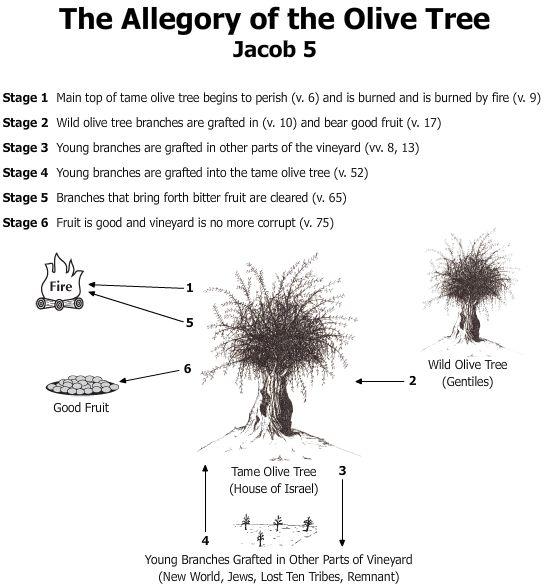You are here
The Allegory of the Olive Tree
| Title | The Allegory of the Olive Tree |
| Publication Type | Chart |
| Year of Publication | 1999 |
| Authors | Welch, John W., and Greg Welch |
| Number | 6-81 |
| Publisher | Foundation for Ancient Research and Mormon Studies |
| City | Provo, UT |
| Keywords | Allegory of the Olive Tree; Jacob (Son of Lehi); Olive Tree; Zenos (Prophet) |
| Abstract | The longest allegory in scripture is Zenos's allegory of the olive tree. In Jacob 5:3, Zenos explains that the tame olive tree represents the house of Israel. From this interpretation, conclusions may be drawn concerning other symbols in the allegory. For example, the young branches taken from the olive tree most likely represent inhabitants of the Americas, the Jews, the lost ten tribes, and a remnant of the house of Israel; and the wild olive tree symbolizes the Gentiles and the nations of the earth. The numbers on the top half of this chart (1–6) represent the six main stages that Zenos addresses in his allegory: (1) the decaying of the top, (2) the grafting in of the wild tree, (3) the planting of young branches in other parts of the vineyard, (4) the returning of the branches to the main tree, (5) the bitter fruit burned by fire, and (6) the good fruit being gathered and stored. On the bottom half of the chart, these same stages are shown graphically, arranged clockwise around the central figure of the tame tree. |
| URL | https://byustudies.byu.edu/charts/6-81-allegory-olive-tree |
Terms of Use
Items in the BMC Archive are made publicly available for non-commercial, private use. Inclusion within the BMC Archive does not imply endorsement. Items do not represent the official views of The Church of Jesus Christ of Latter-day Saints or of Book of Mormon Central.
Bibliographic Citation
Scripture Reference
Subscribe
Get the latest updates on Book of Mormon topics and research for free

